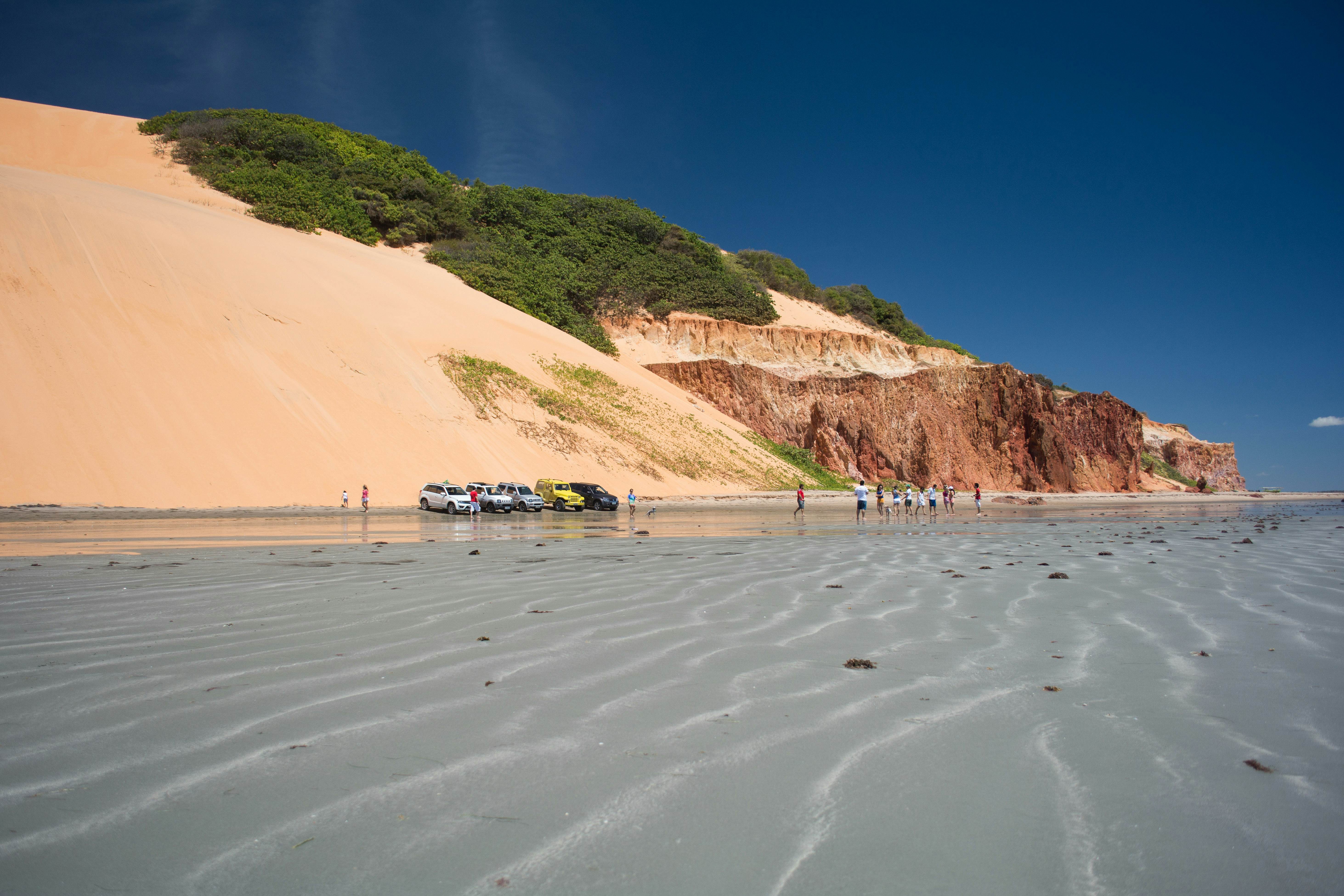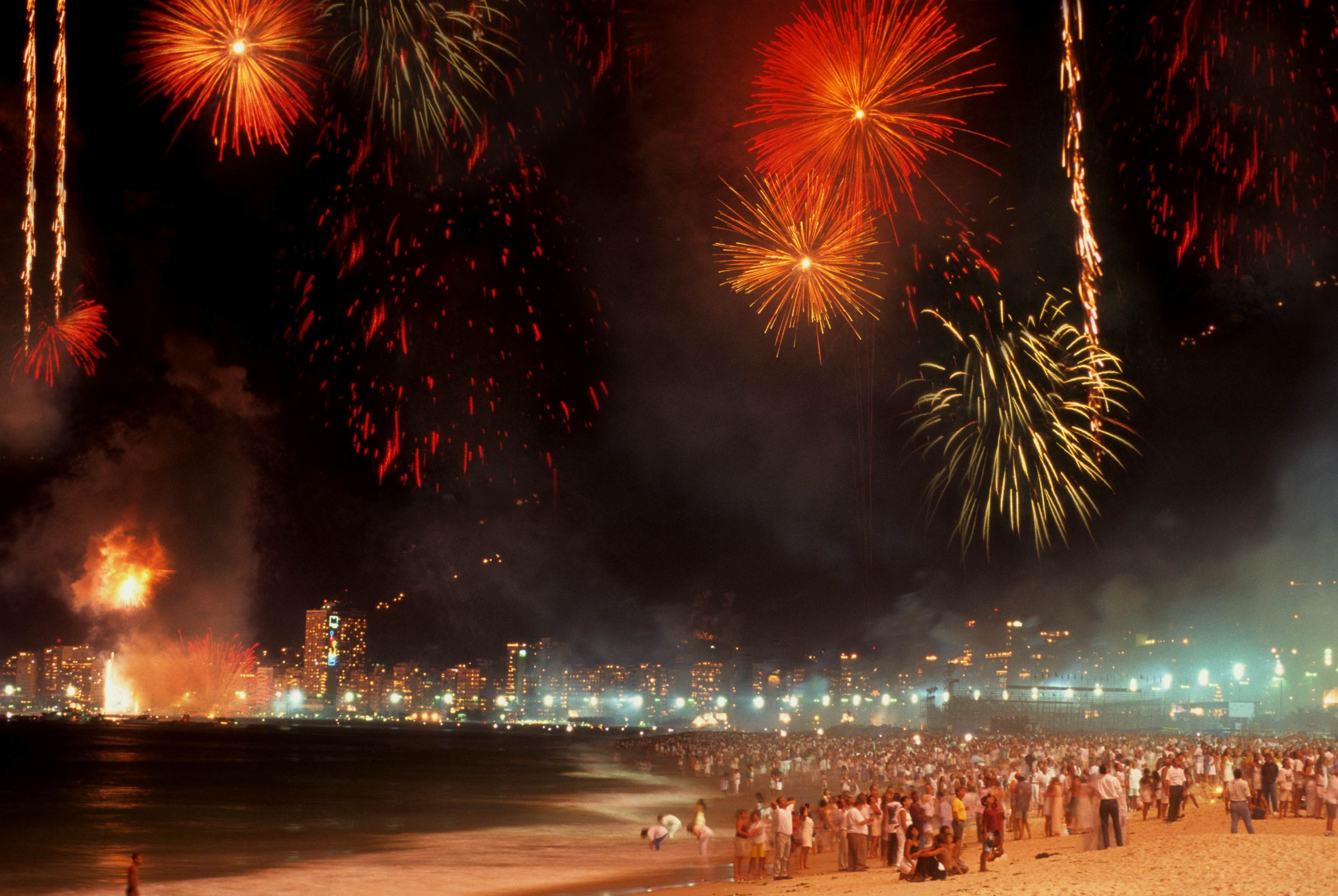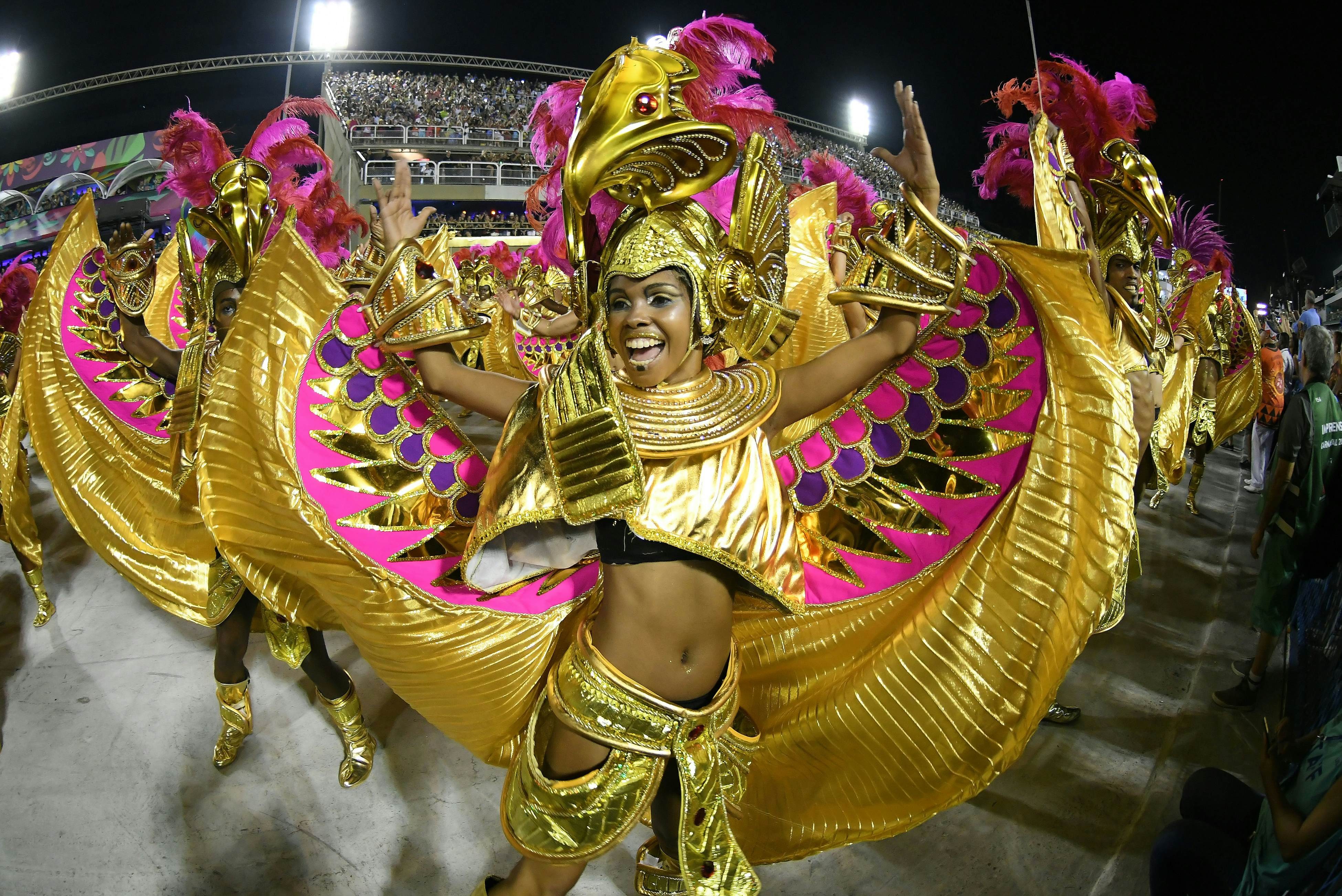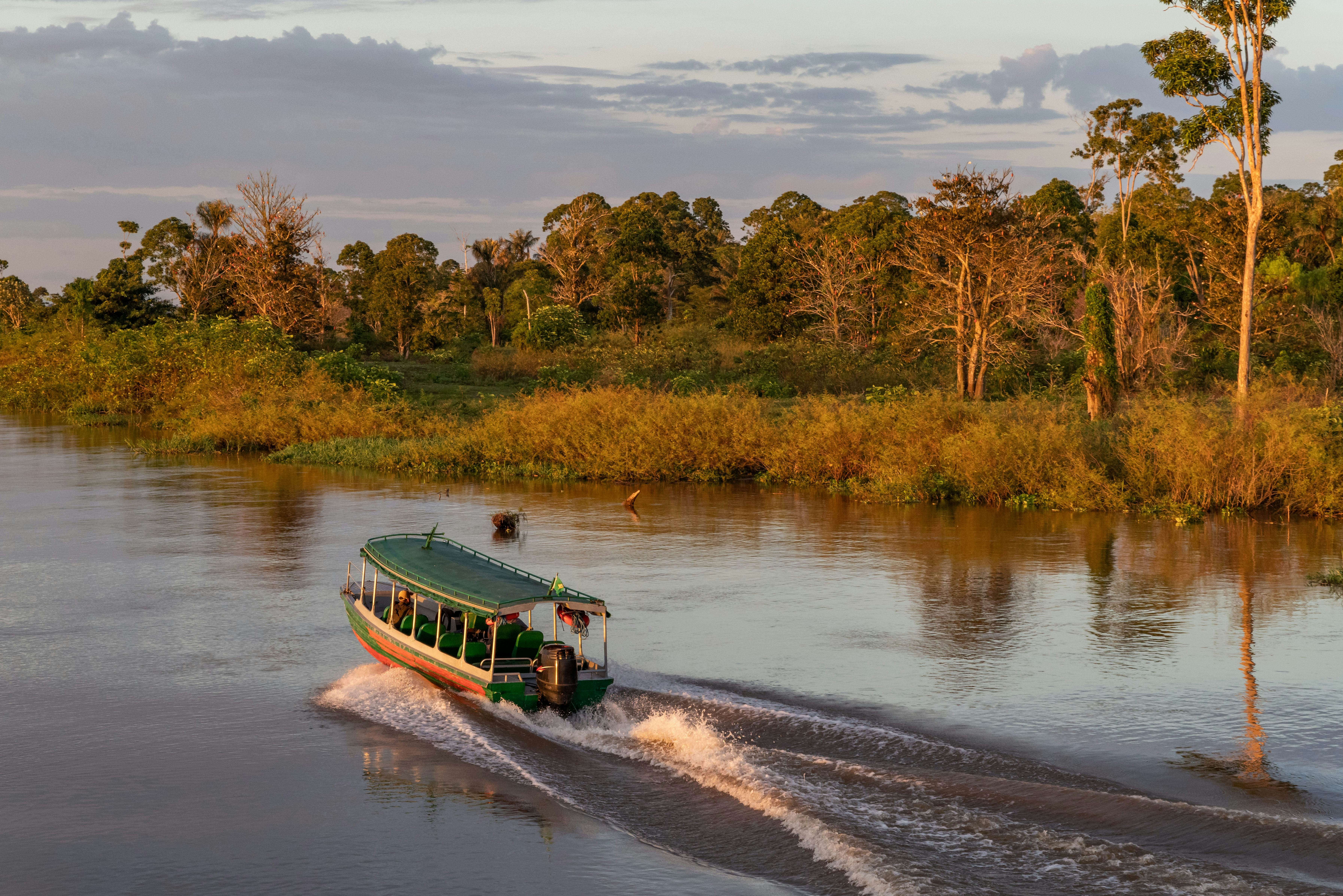Brazil, a land of vibrant culture and breathtaking landscapes, offers a year-round appeal to travelers. From the bustling beaches of Rio de Janeiro to the mysterious depths of the Amazon rainforest, deciding when to visit this South American giant is key to unlocking your ideal experience. With diverse climates and a calendar packed with festivals, understanding the Best Time To Travel To Brazil is crucial for planning your perfect getaway.
Shoulder Season Bliss: October & November
For those seeking pleasant weather without the overwhelming tourist crowds, October and November emerge as prime months to visit Brazil. As the Southern Hemisphere spring blossoms, these months offer a sweet spot of warm, sunny days across much of the country, particularly along the stunning coastlines. You’ll find fewer queues at popular attractions and more space to stretch out on Brazil’s famed beaches compared to the peak summer rush.
 Tranquil beach scene with gentle waves, sand dunes, and distant cliffs, showcasing the serene beauty of Brazil's coast.
Tranquil beach scene with gentle waves, sand dunes, and distant cliffs, showcasing the serene beauty of Brazil's coast.
The milder temperatures during October and November are ideal for exploring outdoor destinations. Imagine hiking through national parks, discovering vibrant cityscapes, or simply relaxing on the golden sands, all while enjoying comfortable warmth and sunshine. This period is particularly appealing for travelers who prefer a balance of good weather and a more relaxed atmosphere, avoiding the peak season frenzy.
Peak Beach Season: December to March
If your dream Brazil trip revolves around sun-drenched beaches and embracing the summer spirit, then December to March is your ideal window. Coinciding with the Southern Hemisphere summer, these months bring hot and humid weather across Brazil, perfect for indulging in the country’s extensive coastline. With over 7,400 kilometers (4,600 miles) of shoreline, you’re spoiled for choice when it comes to finding your perfect beach paradise.
However, be prepared for company. This period marks Brazil’s peak tourist season, especially during school holidays and around Christmas and New Year. Popular beach destinations, particularly those near Rio de Janeiro, will be bustling with both international visitors and Brazilian vacationers.
For a taste of Afro-Brazilian culture alongside your beach days, consider heading north to Bahia. Or venture further to the northeastern state of Ceará, where unique “nordeste” culture meets dramatic sand dunes. These northern regions experience hotter summer temperatures, often averaging between 30.5°C (87°F) and 32°C (90°F).
If you desire summer warmth but prefer slightly milder heat, the southern city of Florianópolis, situated on a large island, offers beautiful beaches with summer temperatures ranging from 27°C (81°F) to 28°C (84°F).
 Spectacular fireworks display over a crowded beach at night, celebrating New Year's Eve in Brazil with vibrant colors and joyful atmosphere.
Spectacular fireworks display over a crowded beach at night, celebrating New Year's Eve in Brazil with vibrant colors and joyful atmosphere.
This festive period is also synonymous with Brazilian celebrations. Experience the unique Brazilian Christmas, where “Papai Noel” might be spotted in Havaianas, and New Year’s Eve beach traditions involving jumping over seven waves at midnight for good luck.
Carnaval Extravaganza: February & March
For an unforgettable cultural immersion, time your trip to coincide with Carnaval. This legendary Brazilian festival, with dates varying according to the Catholic calendar, typically falls in February or early March, culminating the week before Ash Wednesday.
Rio de Janeiro hosts the most famous Carnaval celebrations, but vibrant festivities erupt across the country. Each city and region often adds its unique flair to this exuberant pre-Lenten party. The weeks leading up to Carnaval buzz with anticipation and excitement as cities prepare for days of music, dance, and colorful parades.
Visiting during Carnaval guarantees an unparalleled experience, but be ready for higher prices for flights and accommodation, and expect large crowds everywhere you go. Booking well in advance is essential.
 Dancers in elaborate golden costumes performing at the Samba School Parade during Rio de Janeiro Carnival, showcasing the vibrant energy and spectacle of the event.
Dancers in elaborate golden costumes performing at the Samba School Parade during Rio de Janeiro Carnival, showcasing the vibrant energy and spectacle of the event.
Amazon Adventure: July to December
Exploring the Amazon rainforest is a dream for many travelers. To maximize your experience in this dense and biodiverse region, the dry season, from July to December, is generally considered the best time to visit Brazil’s Amazon. During these months, hiking trails become more accessible, and lower river levels enhance boat excursions and wildlife spotting opportunities.
While termed the “dry” season, it’s crucial to remember you’re still in the Amazon rainforest. Rainfall remains a possibility, but it’s significantly less intense than the wet season. The drier conditions create more favorable circumstances for navigating the rainforest and enjoying river adventures.
 Serene Amazon River scene at sunrise with a ferry boat leaving a wake, showcasing the golden light illuminating the riverbank vegetation and still waters.
Serene Amazon River scene at sunrise with a ferry boat leaving a wake, showcasing the golden light illuminating the riverbank vegetation and still waters.
Low Season Perks: May to September
For budget-conscious travelers or those seeking a quieter Brazilian experience, the low season from May to September offers distinct advantages. Brazil’s winter months see beach crowds diminish, especially in the southern regions, although the weather can be damper and cloudier in the south.
Except for July, which can see increased domestic travel due to school holidays, you’ll generally find lower prices on hotels and tours during this period. While swimming and sunbathing might be less appealing in the south during winter, northern destinations maintain warm temperatures year-round, allowing you to still enjoy beach activities with the benefit of fewer tourists and lower prices. This period is excellent for exploring cities, cultural sites, and enjoying a more authentic, less tourist-centric side of Brazil.
Ultimately, the best time to travel to Brazil depends on your priorities. Whether you seek sunshine and beaches, cultural festivals, Amazonian adventures, or budget-friendly travel, Brazil offers distinct experiences throughout the year. By considering your interests and this seasonal guide, you can pinpoint the ideal time to embark on your Brazilian journey.